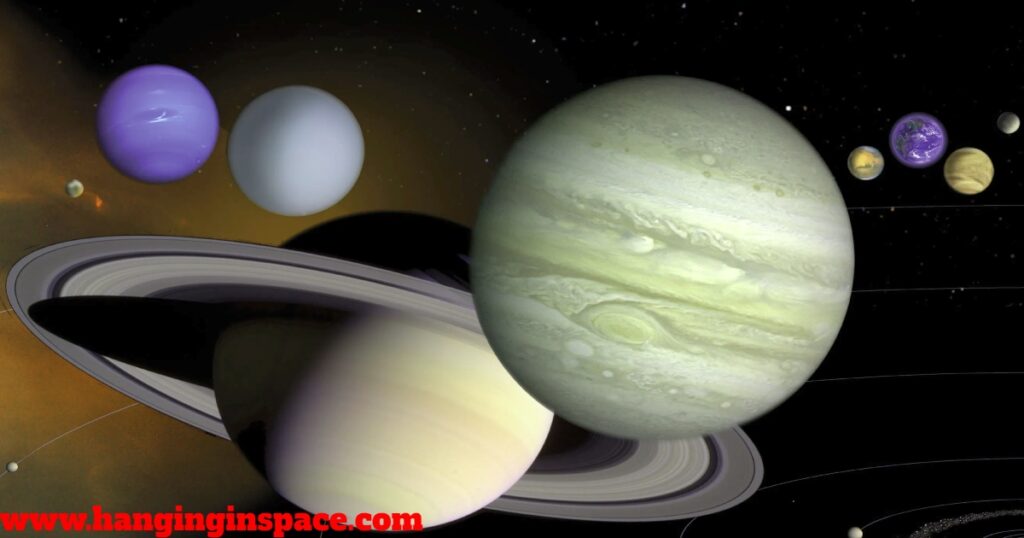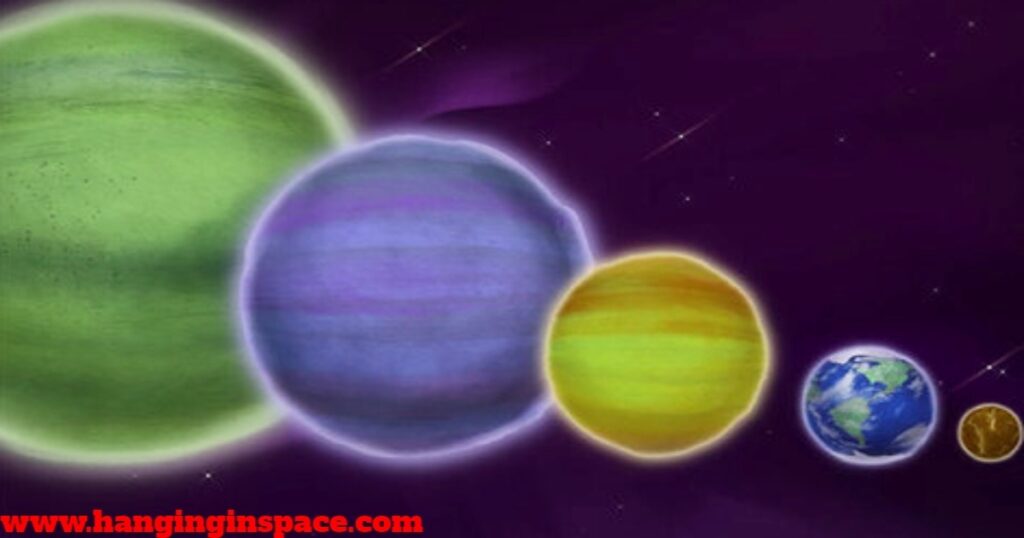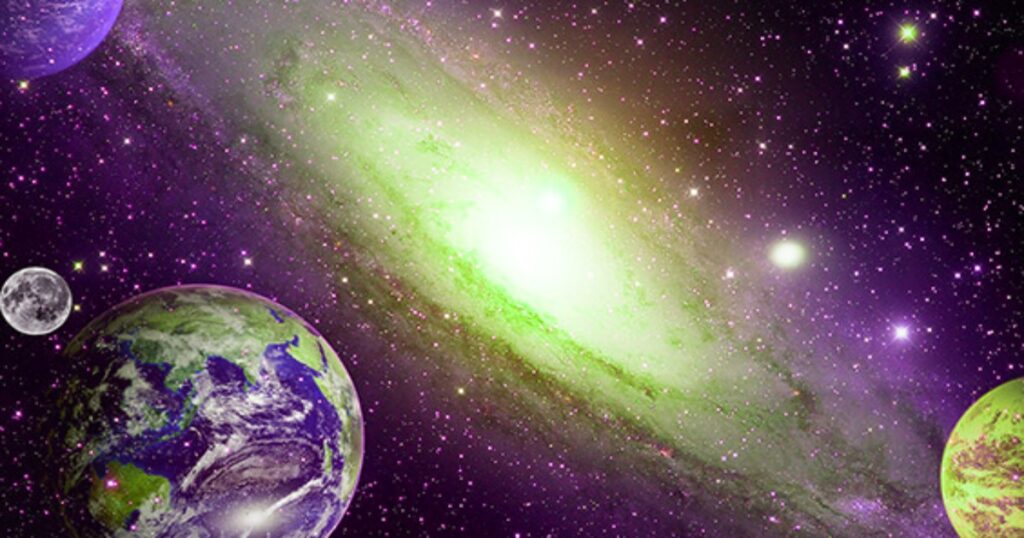Planets are astronomical bodies that orbit stars and do not produce their own light. They are characterized by their spherical shape, gravitational influence, and the ability to clear their orbits of other debris. The size, mass, volume, and diameter of planets vary widely depending on their composition and location.

What is the Life Cycle of Planets?
The life cycle of a planet begins with its formation from a protoplanetary disk of gas and dust surrounding a young star. Over millions of years, gravitational forces cause particles to collide and accrete, forming planetesimals and eventually protoplanets.
These protoplanets continue to grow through accretion and collision until they reach their final size and become fully-fledged planets.
What is the Composition of Planets?
Planets are composed of various materials depending on their location in the solar system and their formation history.
Terrestrial planets like Mercury, Venus, Earth, and Mars are primarily composed of rock and metal, while gas giants like Jupiter and Saturn are predominantly made of hydrogen and helium. Ice giants like Uranus and Neptune contain significant amounts of water, ammonia, and methane in addition to hydrogen and helium.
What is the Structure of Planets?
The structure of planets can vary depending on their composition, size, and distance from their parent star. However, most planets share similar basic structural components like core, mantle, crust and atmosphere :
Core:
The core is the innermost layer of a planet and is typically composed of dense metallic materials such as iron and nickel. In terrestrial planets like Earth, the core is divided into a solid inner core and a liquid outer core. The core generates a magnetic field on some planets, which helps protect the planet from harmful solar radiation.
Mantle:
Surrounding the core is the mantle, a layer of hot, semi-solid rock that extends from the core to the outer crust. The mantle is responsible for convective currents and tectonic activity on terrestrial planets. In gas giants, the mantle may consist of a layer of fluid or icy material beneath the outer atmosphere.
Crust:
The outermost layer of a planet is the crust, which forms the planet’s surface. The crust can vary in thickness and composition depending on the planet. Terrestrial planets like Earth have thin, rocky crusts, while gas giants may have icy or gaseous surfaces.
Atmosphere:
Many planets have an atmosphere, a layer of gases surrounding the planet that is held in place by gravity. The atmosphere may vary in composition, density, and temperature depending on the planet’s distance from its parent star, its size, and its geological activity.
What are the Types of Planets?
In the vast expanse of the universe, planets come in a variety of types based on their composition, size, and location within their planetary systems. Some of the main types of planets include:

Terrestrial Planets:
Terrestrial planets, also known as rocky planets, are small, dense worlds composed primarily of rock and metal. Compared to gas giants, they have solid surfaces and thin atmospheres. Terrestrial planets include Mercury, Venus, Earth, and Mars.
Gas Giants Planets:
Gas giants are large planets primarily composed of hydrogen and helium, with small amounts of heavier elements. Gas giants have thick atmospheres and lack solid surfaces. Gas giants include Jupiter and Saturn in our solar system.
Ice Giants Planets:
Ice giants are similar to gas giants but contain a higher proportion of water, ammonia, and methane ice in their atmospheres. They have thick atmospheres and may have rocky cores surrounded by icy mantles. Uranus and Neptune are examples of ice giants.
Dwarf Planets:
Dwarf planets are celestial bodies that orbit the Sun but have not cleared their orbits of other debris and are not considered full-fledged planets. They are smaller than planets and often located in the outer regions of the solar system. Pluto, Eris, Haumea, Makemake, and Ceres are examples of Dwarf Planets.
Exoplanets:
Exoplanets are planets that orbit stars outside our solar system. They come in a variety of types and sizes, and astronomers have discovered thousands of exoplanets using techniques such as transit observations and radial velocity measurements. Exoplanets can be terrestrial, gas giants, or even exotic types such as hot Jupiters and super-Earths.
Rogue Planets:
Rogue planets, also known as free-floating planets, are planetary-mass objects that do not orbit any star. They may have been ejected from their planetary systems or formed independently in interstellar space. Rogue planets are difficult to detect but may be common in the universe.

Examples of Planets:
KOI-8960b: Biggest Planet ever
Discovered in 2019 by NASA’s Kepler Space Telescope KOI-8960b is the largest planet ever. KOI-8960b isn’t imaged directly but detected through its gravitational influence. KOI-8960b has a great size, estimated at 1.6 times Jupiter’s radius.
KOI-8960b is an exoplanet that resides in the Draco constellation within our Milky Way galaxy, roughly 1,700 light-years from Earth. While orbiting a K-dwarf star, KOI-8960b isn’t a small planet itself, blurring the line between the gas giant and brown dwarf due to its immense size.
Kepler-37b: Smallest Exoplanet ever
Discovered in 2013 by the Kepler Mission Team Kepler-37b is the tinniest exoplanet ever discovered. Kepler-37b isn’t directly imaged but found through its transits. Kepler-37b is a rocky planet, slightly larger than Earth (1.3 times Earth’s radius).
Kepler-37b orbits a K-dwarf star in the Lyra constellation within our Milky Way galaxy, roughly 219 light-years from Earth. Kepler-37b is the smallest confirmed exoplanet yet, holding the title of closest companion to a Sun-like star within a multi-planet system.
However, Mercury in our solar system holds the title of the smallest planet ever and Hygiea is the smallest dwarf planet ever discovered.
What is the Stars’ Influence on Planets?
Stars play a significant role in shaping the evolution and dynamics of planets through their gravitational pull, radiation, and stellar winds. The gravitational influence of a star determines the orbits and stability of planets within a planetary system.
Stars also provide heat and light to planets, driving atmospheric processes and supporting life. However, stars can also pose risks to planets, such as solar flares, coronal mass ejections, and supernova explosions, which can affect planetary atmospheres and climates.
What is Planets’ Influence on Celestial Bodies?
Planets exert gravitational forces that influence the orbits and dynamics of other celestial bodies, including moons, asteroids, and comets. They play a crucial role in shaping the structure of the solar system and maintaining its stability over long periods.
Planets also interact with each other through gravitational forces, leading to phenomena such as orbital resonances and gravitational perturbations.
Difference between Planets and Stars:
Planets Vs. Stars
| Feature | Planets | Stars |
|---|---|---|
| Definition | Celestial bodies that orbit a star (or stellar remnant), are round due to their own gravity, and do not generate their own light through nuclear fusion | Large, luminous celestial bodies that generate light and energy through nuclear fusion in their cores |
| Light | Reflect sunlight or emit faint thermal radiation | Generate and emit their own light through nuclear fusion processes |
| Size | Range in size, from Mercury (smaller than some moons) to Jupiter (the largest planet in our solar system) | Can be much larger than planets, with some giants dwarfing our Sun |
| Mass | Significantly less massive than stars | Can be millions to billions of times more massive than planets |
| Composition | Primarily rock, gas, or ice giants depending on size and distance from the Sun | Primarily hydrogen and helium, with trace amounts of heavier elements |
| Temperature | Range in temperature depending on distance from the Sun and atmospheric properties | Extremely hot, with core temperatures reaching millions of degrees Celsius |
| Magnetic Field | Most planets have magnetic fields generated by internal motion of molten cores (exceptions: Mercury, Venus) | Some stars have strong magnetic fields, while others have weak or complex magnetic structures |
| Internal Structure | Varied depending on planet type (solid core, mantle, atmosphere) | Layered structure with a core, radiative zone, convective zone, photosphere, chromosphere, and corona |
| Motion | Orbit a star | Relatively stationary in their positions within the galaxy (though they do have some motion) |
Conclusion:
In conclusion, planets are the cosmic architects of the universe, sculpting the fabric of space and time with their gravitational influence and dynamic interactions. From their formation in stellar nurseries to their profound impact on the evolution of celestial bodies, planets continue to inspire awe and wonder in all who contemplate their majesty.
